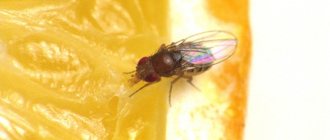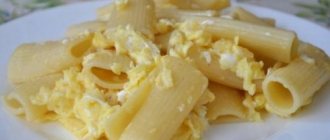What to do if there is a scolopendra in the house
In order to get rid of scolopendra on your own, you need to choose a drug with maximum effectiveness.
In the fight against centipedes, various traps and gels practically do not work. Arthropods move quickly, are nocturnal and are predators. Therefore, using baits against centipedes makes no sense. At the same time, the use of over-the-counter drugs does not guarantee quick and complete relief from scolopendra. These insects are highly resistant to poisons and quickly develop immunity. Therefore, if you do not kill the centipede the first time, then you will simply raise a mutant that is not affected by chemicals.
Any centipedes belong to the class of woodlice. They love high humidity. Therefore, they prefer to crawl into houses and apartments that are quite humid. Sometimes the cause of scolopendra can be leaking pipes in the basement or constant dampness in the bathroom.
! On the site, these insects prefer to live in garbage or piles of mown grass. You need to get rid of all this in a timely manner and not accumulate waste on the territory. However, this simple habit will also serve to prevent the appearance of other insect pests, as well as rodents.
But millipedes can also appear in apartment buildings. Therefore, in apartments you should install plugs on drains and small grilles on ventilation holes.
The most famous ways to combat woodlice
It is possible to get rid of wood lice using solutions prepared at home or using preparations that are sold in specialized stores of household and agricultural chemicals
But we must remember that if you use chemicals, you must adhere to the strictest precautions and safety measures, and if you have small children and pets, increase these measures
Solutions at home
Let's look at some of them that have proven to be the most effective and popular for controlling woodlice. Their effectiveness is slightly less than that of chemical agents, but they are not so dangerous to others. As practice has shown, after two treatments, woodlice disappear completely.
- Bread kvass. You can take ready-made kvass, which is available in almost every home during the hot season, or dilute dry, store-bought kvass in a proportion of ½ boiling water. Spray the mixture or kvass into the areas where wood lice are found.
- Salt (table salt), hot pepper with the addition of tobacco. Take salt - 3 g, ground hot pepper - 3 g, powdered tobacco - 3 g, dissolve it all in one liter of water. We wet the surfaces of the largest accumulation of woodlice with the solution. Eight hours after treatment, thoroughly wash the surfaces with a chlorine solution.
- Bleach solution. We prepare a solution in a ratio of 40-50 g of bleach per liter of water, you can also use hypochlorite in a ratio of ½ to water. We disperse them into woodlice habitats. Since chlorine is a very caustic substance, it is necessary to take all measures to protect the organs of vision, breathing and carry out processing using protective gloves. Do not allow children and animals into treated areas. Three hours after treatment, thoroughly ventilate the premises until the smell of chlorine completely disappears.
- Boric acid. We take boric acid powder and scatter it at the places where the pest appears.
Specialized pest control organizations mainly use chemicals. But by doing this, they do not remove the main factors due to which woodlice appeared, and this is increased humidity and the presence of organic residues, and rest assured, woodlice will appear, again occupying the free territory, creating a new colony.
And in the end, I would like to say that the main actions to completely in residential premises is to detect the initial places of high humidity in the area of the apartment or house, and only then, using the above methods and means, to destroy the pests. To prevent their reappearance, it is best to use table salt, making salt barriers out of it, before entering living quarters.
How to deal with scolopendra?
Sooner or later, many people ask questions about centipedes: who are they? How to get rid of them? What harm do they do to a person? Where do they come from? Let's take a closer look at the topic of centipedes in the house.
Scolopendra is a type of centipede. The habitat is in areas with high humidity and heat. There are about 90 varieties. They have sharp poisonous fangs. They don't bite, but sting in a peculiar way.
Interesting fact: they have an odd number of legs. Depending on the species, they can have up to 350 legs. The most gigantic centipedes have a body length of 30 cm and live in Australia.
Description.
The domestic scolopendra is also called the flycatcher. Looks terrifying. The size reaches 55 mm. The color is yellowish-brownish with stripes along the body. Despite the large number of legs, only the last pair is the longest. They love to move around the house in the dark. Has high movement speed. The first pair of legs eventually reorganized and began to replace the jaw for capturing prey.
Interesting fact: insects have their own thinking. When it catches several insects, it feeds on one and does not let go of the rest, holding them in its paws.
Where do they come from?
Scolopendra reaches 55 cm in size
The basic instincts of this insect are food. Take a look at your home, because they feed on household insects (bugs, spiders, cockroaches...). If there is an abundance of this food, that is the reason for their presence in the house. They like to live in damp and warm rooms, for example: basements, storage rooms, bathrooms. Where do they come from:
- sewer joints;
- from cracks in walls;
- ventilation;
- from under concrete slabs.
Harm.
Scolopendra bites are harmful not only to humans, but also to pets (they are difficult to tolerate). People who suffer from chronic allergies develop severe complications from a scolopendra bite. They have venom in their fangs, which is similar in composition to scorpion venom. The bites are painful and go away within two days.
Symptoms of bites:
- at the moment of the bite there is a sharp, prolonged pain;
- body temperature rises;
- weakness of the body appears;
- numbness appears;
- the skin turns red and swelling begins.
Helpful tip: for relief, place a heating pad with moderately hot water on the bite site. You can put ice and take analgesics.
Preventive actions
In order to never wonder about how to get rid of scolopendra in the house, it is necessary to take preventive measures.
- Fighting moisture. The fact is that centipedes are very afraid of lack of humidity. Drying the room is considered the most global and simplest method, since where it is dry, light and clean, insects will not grow. That is why it is necessary to regularly ventilate your apartment. You should also eliminate all plumbing breakdowns and stagnant moisture under the bathtub or sink.
- Insulation. Another important rule is to seal small gaps, cracks, cracks, and voids through which centipedes can enter the house.
- Window protection. It is best to protect windows with mosquito nets. After all, they are most often the main route for insects to enter the house.
- Fight against other domestic insects, which include ants, fleas, cockroaches, as they act as food for scolopendra.
Cleaning the area around the house from various deposits of debris, as well as from fallen leaves, which can serve as a shelter for centipedes.
What to do if you are bitten?
The centipede rarely attacks itself, but if this happens, you need to know what to do if it bites.
- First, you need to thoroughly wash the bite site with soap (preferably household soap), and then treat it with alcohol.
- Apply a sterile bandage.
- Rest more and drink fluids so that the poison leaves the body faster.
- Contact your doctor.
Symptoms
The main symptoms after a scolopendra bite are as follows:
- swelling and redness at the site of the bite;
- pain (can be compared to a hornet sting);
- increased temperature (sometimes up to 39 degrees);
- itching;
- general intoxication of the body.
In most cases, scolopendra venom is not fatal. This is only possible if a person is allergic to some component of the poison or has cardiovascular diseases. However, symptoms can usually be relieved if you go to the hospital in a timely manner.
It is worth noting that domestic scolopendras (flycatchers) do not cause such symptoms. If they sting, only slight redness and a burning sensation may appear at the site of the lesion.
How to protect yourself from scolopendra?
Most often, scolopendras attack people in nature, climbing into tents and getting into clothes
Therefore, it is very important to know how to protect yourself from scolopendra in the fresh air.
- Close your tent carefully and check for insects before climbing into it.
- Carefully inspect clothing and shoes.
- Do not go outdoors in the dark.
- Carefully lift branches and stones.
What should you not do after being bitten?
There are some things you should not do after being bitten by a scolopendra. The most important thing is that you should not cut the bite site in the hope of getting rid of the poison. Also, do not apply a tourniquet, as this will lead to stagnation of blood and even greater problems. Do not try to catch up and kill the scolopendra.
How to get rid of it?
Of course, if you notice one centipede in the house, you shouldn’t panic, but if there are more than 2-3 of them, then it’s better to get rid of them as soon as possible.
How to deal with centipedes in the house? You won’t be able to get rid of centipede with a slipper by simply slamming it down, since the body of this insect is flat and covered with a dense shell. The main methods of combating centipedes are divided into folk and professional. Moreover, it is necessary to poison not only the centipede, but also the food for which it came, that is, Prussians, bedbugs, ants and other insects.
Folk remedies
Folk remedies are not always effective, but they are safer, especially if there are four-legged pets in the house. However, it is worth noting that the chemicals now produced are of quite high quality and can also be used at home without harm to people and animals.
Boric acid
Treating floors and baseboards with boric acid is the simplest and most effective way to combat scolopendra. In this case, there is no need to mix the substance with anything; it is enough to simply apply it in those places where the centipede is most likely to live.
Adhesive tapes
Double-sided tape can be used as adhesive tape. It should be pasted in those places where scolopendra lives, and several flies should be placed on the sticky surface as bait. The centipede will come for food and stick itself.
Fighting against scolopendra using folk remedies is not always effective, since it does not see well and often does not notice baits and traps made for it. Therefore, it is better to use special chemicals.
Professional chemistry
It is with the help of professional chemistry that you can achieve quick results in the fight against scolopendra. There are several chemical options that can be used against centipedes.
Aerosols
In most cases, aerosols work well against scolopendras. Ideally, it is necessary to spray the centipede itself with the product, but sometimes it is enough to treat the places where it was noticed. Crawling along the treated surface, it catches particles of chemicals with its paws, which gradually poison it.
Liquid insecticides
Typically, liquid insecticides are sold in large bottles where the concentration of chemicals is very high, so these products must be diluted before use
It is very important to read the instructions, as the manufacturer may have recommendations for use
Liquid insecticides should be applied to surfaces where scolopendra has been spotted. As a rule, these are baseboards, corners, crevices and nooks in the apartment.
Disinsection service
Unfortunately, only a disinfestation service can cope with a large infestation of scolopendras, whose employees, when starting treatment, take into account the following factors:
- affected area;
- the number of centipedes, as well as other dangerous insects that may be in the house;
- processing tools that may have been used before.
The last point is extremely important. If earlier attempts were made to combat scolopendras, which did not produce results, this may indicate that the insects have developed immunity to chemicals, and exterminators now need to select stronger drugs.
The pest control service can use the following methods to combat centipedes:
- Cold fog. It involves irrigating a room using a special machine. Small (up to 50 microns) particles of chemicals create a cloud that settles for several hours, making the millipede more likely to be exposed to the insecticide and become infected.
- Hot fog. This is a dry method of irrigating a room using a special machine that heats chemicals and then sprays them under high pressure. The insecticide particles in this case are even smaller than with cold fog - about 0.5 microns.
Fighting methods
You should not try to kill scolopendra with a slipper or other improvised means. It is almost impossible to achieve this due to the fact that its body is covered with a very dense shell. In addition, one should take into account the insect’s evasiveness, which makes it very difficult to make an aimed strike. It is preferable to catch the centipede using a dustpan, brush and rubber gloves. Then take it as far from the house as possible.
Chemicals
Destruction of harmful insects
You can remove scolopendra from the house using chemicals. For control, broad-spectrum drugs are used to kill various harmful insects. These include:
- Dichlorvos;
- Medilis cyper;
- Henkel Combat;
- Raid;
- Starex.
When using these insecticidal preparations, it is necessary to have personal protective equipment: a respirator, rubber gloves and the most closed clothing possible.
Folk remedies
However, it is not always possible to use chemicals to combat scolopendra in the house. Therefore, many people resort to more gentle methods of struggle, using time-tested folk recipes. Some sources recommend using boric acid for this purpose, which is used against many domestic insects. However, we should not forget that scolopendra is a predator, and baits with boron powder are unlikely to attract its attention.
Traps
Another method to get rid of centipedes in the house. It is enough to simply place sticky traps in places where centipedes appear. The result of your struggle will be obvious very soon.
How to get rid of scalapendra
Scalapendra is a creature that goes out hunting at night, and during the day it hides in various secluded places. During the day it can be seen if the number of these insects increases sharply. To get rid of a flytrap, it is enough to leave several traps overnight, placing them on the floor. Wet rags are suitable for this, under which centipedes like to hide. However, centipedes should not be killed. If possible, it is better to take them outside and release them - let them catch insects in nature. Chemical and folk remedies help with the invasion.
What should be done:
- Firstly, you will have to overcome the feeling of fear, realizing that this insect is harmless to humans. With this approach you can easily cope with the task.
- Secondly, you should decide on the number of insects. If there are only a few of them, then this problem can be solved simply and in a short time.
- Thirdly, it is necessary to analyze the ways in which centipedes appear in the home. To do this you will have to seal all the cracks. In addition, you need to think about the source of food for centipedes: it is possible that you will have to start fighting not with them, but with hordes of other insects that are part of the flycatchers’ diet.
- Fourthly, you need to decide on the tactics of struggle, choosing the necessary means. Sometimes it is enough to deprive them of food, in the form of cockroaches, fleas, flies, so that the centipedes themselves leave the home. After all, they do not feed on the remains of human food, like some other insects.
Folk remedies
Bait in the form of food does not work on these insects, since their diet is completely different. You can try another option. To do this, just sprinkle powder on the floor, which will stick to the legs of insects. As a result, the flycatchers will die or will look for another, more comfortable place. Such methods of control can be effective in combination with the fight against other insects, such as cockroaches, bedbugs, flies, fleas, etc. It is also necessary to ensure that there are no cracks in the structures, and that the desired microclimate is maintained in the home, without increased humidity. If this is not done, centipedes will appear again and again in the house or apartment.
To combat centipedes, the following are often used:
- Boric acid. There is no need to prepare balls, as for cockroaches, but simply scatter this white powder on the floor in places where scalapendra prefer to appear. Boric acid also has a detrimental effect on other insects, such as cockroaches, ants, etc. At the same time, individuals that come into contact with the powder infect other individuals in the nest. Using this remedy, it is possible to get rid of the entire colony.
- Cayenne pepper. It also has a detrimental effect on similar insects. This remedy is used against flycatchers in the same way as boric acid.
Application of insecticides
To destroy scalapendria, you can use toxic drugs in the form of a spray or aerosol. They are sprayed in places where these insects like to live - under the bathroom, in various cracks, etc. The absence of cracks increases the guarantee that such insects will not appear in a person’s home.
The centipede moves quite quickly, so it is quite difficult to kill it with a newspaper or slipper. There may be a nest under the bathtub, which needs to be treated with insecticides. As a rule, centipedes appear in a person’s home from the outside, and especially from basements, where often no one cleans or eliminates leaks in heating, water supply and sewerage systems, which creates comfortable conditions for the life of many insects. As for private houses, it is necessary to promptly remove garbage near the house, where centipedes live and breed.
The following can be recommended as effective chemicals:
- Dichlorvos Neo - aerosol.
- Medilis-Ziper is a concentrated emulsion.
- Raid - aerosol.
- Globol Original is a highly toxic paste.
- Henkel Combat - spray.
- Lambda Zone is a suspension.
When using such chemical control agents, you need to know that:
- These drugs are toxic to humans and cause poisoning, respiratory damage, and skin irritation.
- They provoke the appearance of symptoms of urticaria or, even worse, Quincke's edema.
- Work with these substances must be carried out exclusively in personal protective equipment.
- Before use, all residents, including pets, must be removed from the house. You must return within the time specified in the instructions for use.
Why do centipedes climb into houses?
Scolopendra.
There are two main reasons for the appearance of these centipedes in human homes. One of them is the presence of potential “feed” . Since scolopendra is by nature a real predator, an abundance of flies, cockroaches or other small insects can attract it.
The second no less common reason for such a visit is the heat-loving nature of the scolopendra . Recently, southern species of these millipedes are increasingly found in temperate latitudes. Since the weather in this area does not always indulge them in warmth and humidity, they find suitable conditions in human houses. Most often, these centipedes can be found in the following places:
- bathrooms;
- toilets;
- area under the kitchen sink;
- boiler rooms;
- attics;
- cellars;
- semi-basements;
- ground floors.
House scolopendra - how to get rid of it
The domestic centipede (as well as the centipede) is popularly called the flycatcher, although in fact this insect has nothing to do with real centipedes. However, their appearance and habits are quite similar.
The centipede is relatively small in size - about 3-6 cm in length, sandy-gray or brown in color and has stripes along the body. It does not pose any danger and to some extent is even useful, since it eats smaller insects: fleas, cockroaches, ants, moths, etc. However, its appearance is also quite repulsive, although it cannot be compared with the appearance of the Crimean centipede.
How to get rid of domestic scolopendra? Here are the main conditions:
- do not allow high humidity in the house - flycatchers also love warmth and dampness;
- seal all cracks in the floor and windows;
- Sticky traps can be placed under furniture, especially in the bathroom and kitchen;
- Any modern insecticide will help completely destroy centipedes.
And of course, you should definitely remove other domestic insects that the flycatcher feeds on. For this, all known insecticides will come to the rescue: aerosols “Raptor”, “Raid”, “Combat”, gels “Globol”, “Sturm”, “Fas”, etc.
https://youtube.com/watch?v=bIlVDAm-u20
House scolopendra
Skutigera, or the domestic scolopendra, is not dangerous to humans, although it causes fear in many. Her movements are fast and graceful, and she can jump into the air and move backwards and sideways. And if she has settled in the house, she will rid it of flies and cockroaches.
The common flycatcher, scugigera (other names: centipede, house scolopendra, arachnid long-legged spider) is a close relative of scolopendra and belongs to the order scutigera, which has about 100 species, living mainly in southern latitudes. From Southern Europe, North Africa and the Middle East, it has spread widely throughout the world.
Terrestrial centipedes arose earlier than insects, in the Silurian period, and are in many ways considered more primitive, but the flycatcher, independently of insects, acquired many similar features to them, adapting to life on land no worse than them.
BREATH, COVERS, EYES
Like insects, centipedes breathe using thin tubes called tracheas. But in the flycatcher, in order not to lose moisture during breathing, the spiracles first open into air sacs, from which the trachea already extends. The integument of the body also helps to save moisture: like insects, they are covered with the thinnest flexible water-repellent layer - the epicuticle. The flycatcher's eyes are simple, but there are so many of them and they fit so closely together that they resemble the complex compound eyes of insects. And the flycatcher’s 15 pairs of long, articulated legs make it the fastest among centipedes (it can reach speeds of up to 0.4 m/s) and allow it to run on vertical planes.
Read: Order of louse (Anoplura)
The length of the hind pair of legs is especially striking; in the female it can exceed the length of the body, and in front there are long whip-like antennae - the organs of smell and touch. The front pair of legs are turned into so-called claws, with which it grabs prey and injects poison into its body. It is believed that the flycatcher's jaws are too small and weak to bite through human skin. But still, you shouldn’t try: it can bite through thin, delicate skin. However, the flytrap's venom is not very toxic to us; the reaction to its bite is even weaker than to a bee sting. In addition, she is not at all aggressive, she bites only in the most extreme cases.
Skutigers can hunt during the day, but are more often active at night, eating sleeping flies and other insects, and during the day in the heat they sit out somewhere under leaves, stones, or in cracks in the bark. The predator knocks down the victim in a jump with its legs, grabs it with them like a lasso, and sometimes even catches several small insects at once, and while it eats one, it holds the rest with its legs. If someone tries to catch a flycatcher, it often sacrifices its legs to escape. Subsequently, the legs may partially or completely grow back.
Read: Family true caddisflies (Phryganeidae)
In the fall, when it gets colder, some of them move into houses, where they can live for more than one year, reaching impressive sizes. Among some peoples, including the Caucasus, it is customary to protect flycatchers as a kind of domestic animal, because they exterminate flies, cockroaches and other annoying insects.
DIFFICULTIES IN REPRODUCTION
The mating behavior of scutigers is interesting to watch. When meeting, the male and female tap each other with their antennae for identification, otherwise the male may become the next victim of this unrivaled predator. There is evidence that flycatchers use pheromones and sound signals for the same purpose, but this is not easy to reliably confirm.
The second difficulty that flycatchers living in the air face when reproducing is to prevent future offspring from drying out, so the male does everything so that his spermatophore containing sperm is picked up by the female as soon as possible: he immediately pushes her towards him, so that he is in the air for some fractions of a second. This method of fertilization is called external-internal.
Females lay eggs one at a time in the soil, covering them with a sticky protective substance, about 60 in total. The flycatcher hatched from the egg is similar to adults, but it has only 4 pairs of legs. Their number increases with each moult to 9, 13 and 15 pairs, and the flycatcher becomes an adult. When kept in captivity for the first two weeks, the juveniles can stay close to their mother, who provides her with protection.
Scolopendra
Don't make mistakes!
Quite a lot of people, when they discover scolopendra, try to get rid of it in ways that in practice do not bring any results, and sometimes can even be harmful. These include:
- Attempts to “kill” the centipede with improvised means - neither a newspaper nor a slipper are capable of killing the centipede. This is due to the fact that its body is covered with a very dense shell, which reliably protects adult individuals from such attacks. In addition, she is quite nimble and moves quickly, so it will most likely not be possible to make a targeted strike.
- Using aerosols against crawling insects. Since this centipede is not an insect, it is simply useless to use the above remedies against it. Moreover, it is much larger in size than insects, and therefore the concentration of toxic substances must be quite high, which such drugs cannot provide. In addition, centipedes run very quickly, and therefore long-term spraying is almost impossible.
- Using sticky traps. Here again the impressive size of the centipedes will interfere. Plus, even if an individual gets stuck and loses several legs in trying to get out, it will escape without much difficulty, and the limbs will soon grow back.
- Attempts to catch it with your hands, a jar, a bag, etc. This is absolutely impossible to do, since if there is danger, the numerous walking limbs of this creature become poisonous.
What to do if there is a scolopendra in the house
Any centipedes belong to the class of woodlice. They love high humidity. Therefore, they prefer to crawl into houses and apartments that are quite humid. Sometimes the cause of scolopendra can be leaking pipes in the basement or constant dampness in the bathroom.
! On the site, these insects prefer to live in garbage or piles of mown grass. You need to get rid of all this in a timely manner and not accumulate waste on the territory. However, this simple habit will also serve to prevent the appearance of other insect pests, as well as rodents.
But millipedes can also appear in apartment buildings. Therefore, in apartments you should install plugs on drains and small grilles on ventilation holes.
At the same time, the use of over-the-counter drugs does not guarantee quick and complete relief from scolopendra. These insects are highly resistant to poisons and quickly develop immunity. Therefore, if you do not kill the centipede the first time, then you will simply raise a mutant that is not affected by chemicals.
Description
Scolopendra is an arthropod from the class of labiopods.
It is more common in countries and regions with tropical climates. In the wild, centipedes live in forests, mountains, and limestone caves. Ideal weather conditions for them are stable warmth and plenty of moisture.
The body of centipedes is long, narrow, segmented, each segment has a pair of legs. The first pair, located near the head, differs from the rest and are called maxillaries. Their purpose is to catch and hold prey. The last pair of legs is a kind of anchor necessary when moving.
Thanks to the faceted structure of the eyes, scolopendras have excellent spatial orientation. The body of arthropods is protected by a chitinous shell, which changes during molting.
The color of the body is protective; brown, light brown, grayish, brown, and black individuals are found. A greenish, orange or blue tint is possible. The shade depends on the habitat, species and age of the centipede.
Predatory centipedes feed on a variety of insects; giant species can catch amphibians, birds, snakes, and bats. Scolopendras are real long-livers. In favorable conditions, these arthropods can live up to 7 years.
They reach sexual maturity by 2 years; adult females lay up to 120 eggs after mating, but more than that do not survive. Young centipedes are born after a few months.
In Russia there is only one species of centipede - ringed or Crimean. This is a relatively small centipede up to 14 cm long, leading a predominantly nocturnal lifestyle. Under natural conditions, scolopendra can be found in the Crimea, the Caucasus, the Krasnodar Territory, the Volgograd and Rostov regions.
The ringed scolopendra is not aggressive, but can attack humans if disturbed. Most often, encounters take place in nature: centipedes crawl into tents and sleeping bags, and are found in firewood.
Sometimes Crimean centipedes are confused with other centipedes - flycatchers. These arthropods live in houses and apartments; they are not dangerous to humans.
Which is the best water heated towel rail to choose: manufacturer ratings
Types of water heated towel rails: which one is better to choose, manufacturer ratings and review of models. Advantages and disadvantages of towel dryers. Features and installation rules.
Ratings
- 14.08.2019
- 2322
What to do if you are bitten by a millipede?
If it was not possible to avoid the attack of the scolopendra, then the person should be given first aid based on the symptoms that appear:
- burning at the site of the bite;
- redness;
- edema;
- increase in body temperature to 38-39 0;
- nausea;
- weakness and dizziness.
Most scolopendra attacks occur in the tropics and deserts. Attacks by local centipedes cause inflammation and tissue necrosis, kidney failure, and heart failure. The lymph nodes located close to the bite site become enlarged.
The described symptoms persist for up to two days. It would seem that residents of Russian cities have no reason to fear Asian and tropical centipedes, but danger may lurk in their own apartment. Numerous exotic animal lovers keep beautiful tropical species of centipedes, but in the process of caring for them they make mistakes, as a result of which they bite their owners or run away. The fugitive easily and quickly climbs the walls and hides in the ventilation system. An unexpected dangerous guest can appear in any apartment.
What to do if you are bitten by a scolopendra? The poison of tropical species quickly penetrates the blood and spreads throughout the body. To reduce this process, it is recommended to apply a tourniquet above the bite site. Treat the wound with substances that neutralize the poison:
- ethyl alcohol - pour on the wound;
- alkaline solution - prepared at home from baking soda.
Call a doctor immediately if you develop a fever, confusion, numbness in your limbs, or difficulty breathing.
One of the consequences of a centipede bite is infection. Remains of animal food that has rotted on the jaws can get into the wound. Thorough treatment with a disinfectant (hydrogen peroxide, alcohol tincture) will help avoid unpleasant complications. In the absence of special means, it is enough to wash the wound with water and soap.
Contents of centipedes
The maintenance of centipedes is very simple. The main criterion is to prevent escape. Scolopendra is a very active creature, it makes escapes skillfully. We recommend keeping centipedes in tall terrariums or containers (not made of thin plastic, as they can chew their way out). It is also necessary to use optimal consecration. You also need to know that centipedes love to dig holes. Some centipede owners mix soil, vermiculite and peat (70 by 20 by 10) - for tropical species; for desert species - mix soil with sand (50 to 50). We recommend equipping the terrarium with shelters. Water is also very important for centipedes; spray the terrarium periodically (spray so that it is moist, not wet), and install a drinking bowl with water (settled).
Feeding centipedes
Scolopendras are predators that use ambush tactics when hunting (but there are species that actively hunt). In captivity, scolopendras are fed: crickets, grasshoppers, cockroaches, and even mice (for example, the giant scolopendra subspinipes). Feed 1-2 times a week. If the scolopendra has no appetite, then it will soon molt.
Shedding
Before molting, centipedes stop feeding and their color is dark. Centipedes molt as long as they live. Shedding frequency: for babies once every 7-8 weeks, and for adults – once or twice a year. The molting process lasts from several minutes to several hours, depending on the size. As soon as they shed their skin, they become defenseless, their exoskeleton is very soft and vulnerable. It will take some more time (up to 2 weeks) for the exoskeleton to harden. But after molting, we do not recommend giving insects or any food that can damage the centipede’s body.
Reproduction of centipedes
Breeding scolopendra is not an easy task! Since nowadays information about them is very scarce! Some centipede owners advise paying attention to the terminal legs (this is the last pair of legs): males are longer, females are thicker. One of the great ways to check the gender of a scolopendra is observation: put two scolopendras in one container and observe... If they behave aggressively towards each other, then there is a high probability that they are same-sex individuals, and if they behave passively, then they are opposite-sex . Pre-feed the individuals to avoid eating each other. After mating, the female lays eggs (after 6-10 weeks), at this time it is necessary to mark the container in a dark place and not disturb it, since the scolopendra can eat the eggs if it senses a threat. After 5-6 weeks, white protonymphs emerge from the eggs, which are very similar to the mother. Another 5-6 weeks will pass and they will start to color + another 2 weeks and they will shed for the first time! Now they can be separated from their mother. They need to be fed insects that are half the size of small centipedes.
Growing centipedes
One of the main criteria for growing scolopendras is the presence of moderate moisture, it should be constant (moist, but not wet)! If you are afraid of dehydration of your scolopendra, then place a lid with water so that the scolopendra has constant access to water. You should first feed small centipedes with dead insects (you can crush them) 2 times a week, after which you can feed them with live, but small ones. Scolopendras, depending on the species, reach sexual maturity at approximately 1-4 years. Temperature at which it is necessary to keep scolopendra: during the day 20-22 C, at night 17-19 C.
Safety
It is not recommended to touch the scolopendra, as it is poisonous (the poison is not fatal, but can be painful). You can handle it with tweezers, gently hold it and lift it so that it cannot escape (do not squeeze). Or use tweezers to guide it so that it runs into a jar or container that you have previously prepared; as soon as it runs there, close it with a lid with holes for oxygen.
Diseases
A) Dehydration (install water and spray periodically, but don’t get carried away with it); B) Ticks (move the scolopendra to a dry place and place a small vessel with water, the ticks should die); C) Mycoses (on the legs of the scolopendra there are black dots or half of them absent, reason: excess moisture)
| ← About the project | Ants → |
New materials:
- A little theory: Scorpios
- Tarantula spiders
- Gray or common toad (Bufo bufo)
Old materials:
- How to glue a terrarium
- Exotic animal lovers club ExoClub.by!
- Keeping and feeding lizards
Why is scolopendra dangerous?
The appearance of the centipede is terrifying. But is this insect dangerous to human life and health? The bites of the individual that lives in the house cannot be called dangerous to people. Scolopendra bites only in case of self-defense. The poison that gets on the wound provokes swelling, redness, slight pain and burning. However, after 1-2 days such symptoms disappear.
These insects are not too dangerous for humans, but it is still better to get rid of them in a timely manner using insecticides and detailed treatment of the premises and infested areas. Scolopendra will not bother a person, even if it lives in close proximity to him. The fact is that an insect can bite if a person accidentally steps on it. A scolopendra bite may well lead to an allergic reaction, which is accompanied by swelling of the affected area.
The “lucky” one, which the scolopendra decided to run through at night, will then find scalding mucus on its body. The skin may become red, but there are usually no serious negative effects.
Giant centipedes
The largest representatives of centipedes live in the western and northern parts of South America, on the island. Jamaica and Trinidad. The body color of the giant scolopendra ranges from copper-red to brown, although red, green, blue and purple specimens are also found. The legs are yellow. The front jaws evolved from ordinary legs; they are connected to glands that secrete poison. Due to the fact that its body is flat and its shell is dense, it is very difficult to destroy a huge insect mechanically.
Huge centipedes feed on invertebrate animals: larvae, earthworms, beetles. Giant centipedes quite successfully hunt small birds, frogs, lizards, mice, small snakes and even bats. The method of catching the latter is distinguished by its originality: the predator climbs along the cave wall to the ceiling, holding on with its claws. With the help of the front legs, the prey is attacked and held, while poison is injected, which paralyzes the victim.
The process of digesting food in the giant scolopendra is very slow and long, with interruptions. The prey is broken down in the stomach using enzymes.
How to keep scolopendra out of your home
In order to prevent the appearance of scolopendra, it is necessary:
- Keep all rooms clean and dry. To do this, they must be regularly ventilated and deal with dampness. Check the integrity of the drain pipes and, if a violation of their integrity is detected, correct the situation immediately. Remember that there should be no stagnant water in the kitchen, bathroom, or toilet.
- Make sure that the house is inaccessible to scolopendra. To do this, all cracks and cracks in the floors and walls must be sealed, as well as the gaps that often appear around window frames and the front door must be eliminated. In addition, we should not forget that these centipedes can even live under the floor covering if it is constantly damp. This happens especially often when there is a cellar under the house. In such cases, the coating must be removed and dried.
- Sometimes scolopendras enter houses through open windows. To prevent intrusion, mosquito nets should be installed on them. In addition, it is advisable that the ventilation holes be closed with fine-mesh grilles.
And of course, attention should be paid to the cleanliness of the area adjacent to the house. Since these centipedes first settle in the yard, it is necessary to take out all the garbage from there, remove fallen leaves and hide building materials and firewood
https://youtube.com/watch?v=Uciu340GiZ4











